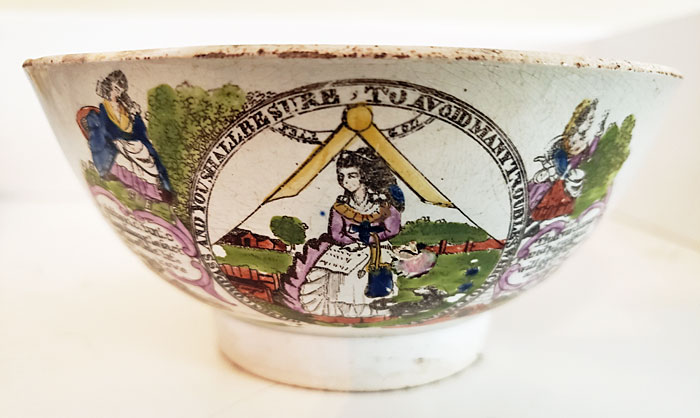
|
|
Susan Swan, author of "Plain & Fancy: American Women and Their Needlework, 1700-1850" chose a print for the inside cover of her book entitled "Keep Within Compass." It depicted a woman framed by an open compass encircled with these words: "Keep within compass and you shall be shure to avoid many troubles which others endure." This small (5" diameter) bowl has the same print on one side, and the corresponding print for men on the other. The bowl was formerly in the collection of Susan Swan, and we have had it in our personal collection for many years. The details of the bowl are best explained with the following description from the Scottish Rite Masonic Museum and Library Blog describing a creamware teapot with similar transfers: This transfer-printed teapot from the late 1700s is not only charming, it also communicates an important social message. Through slogans and illustrations, it reminds both husbands and wives to abide by a moral code of self-restraint and to “keep within compass.†The prints on each side of the teapot—one featuring a man; the other, a woman—depict the rewards of proper behavior versus the dangers of temptation. A large central image, contained within a compass’s legs (“within compassâ€), presents an idealized view of the perfect life in the late 1700s. Around each of these main illustrations, four vignettes provide cautionary tales of the ruin that awaits those who eschew a virtuous life. |
|
$
375.00 Ask Us About JH 11
Call us anytime to discuss this or any other item, as well as our convenient terms.
|
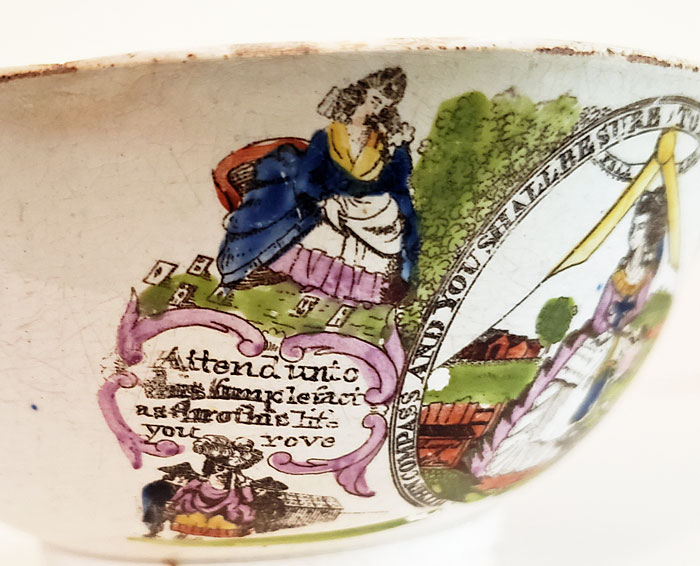 |
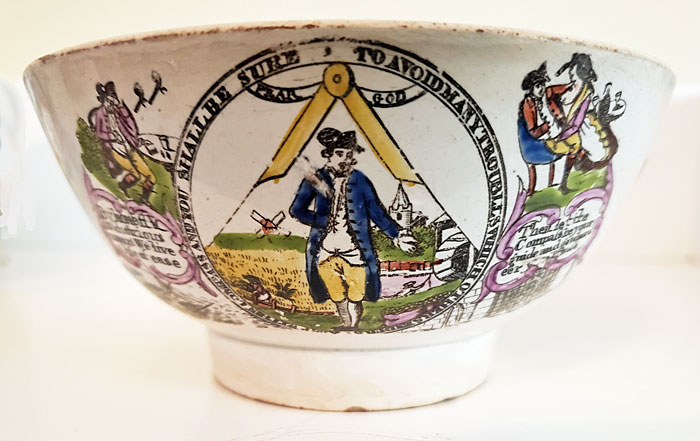 |
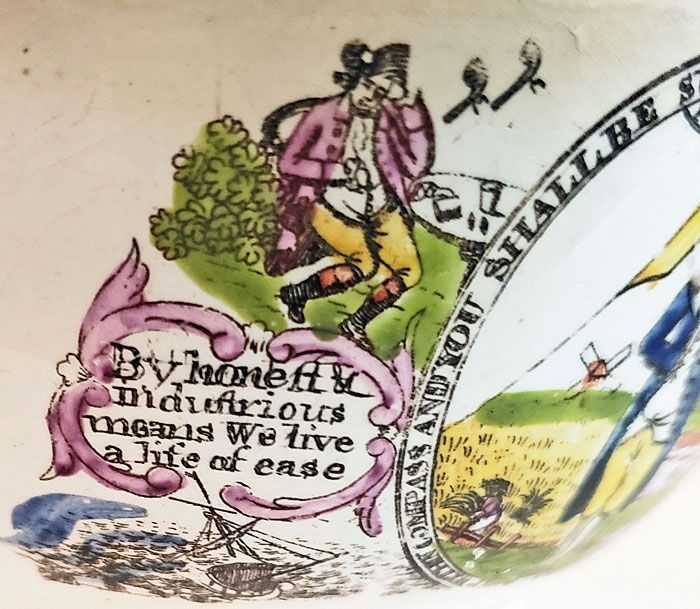 |
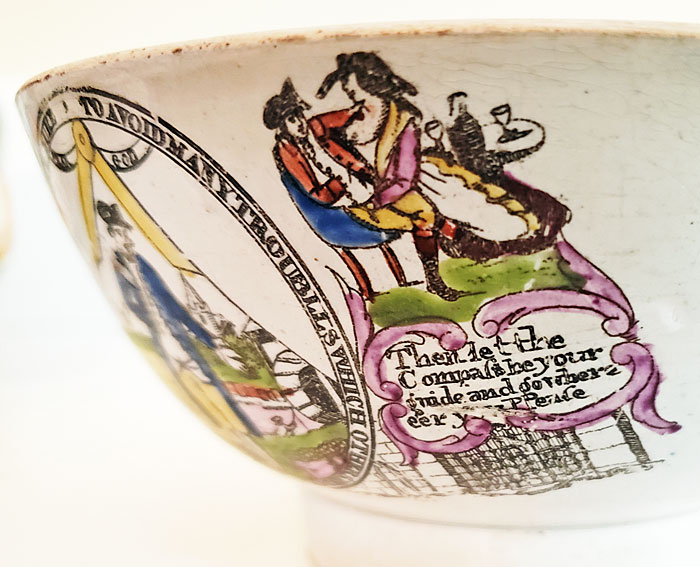 |
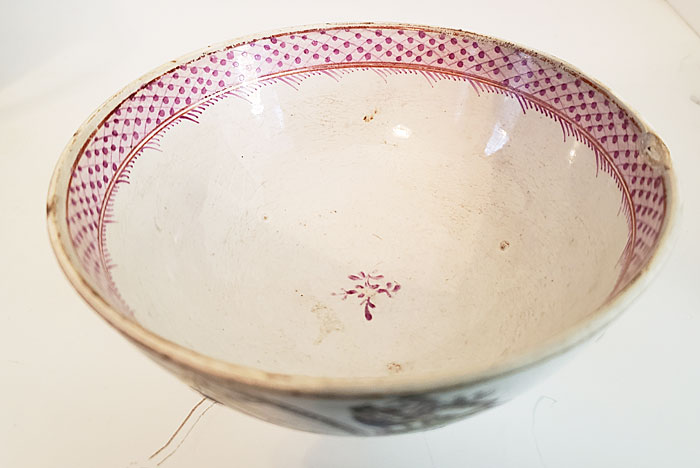 |